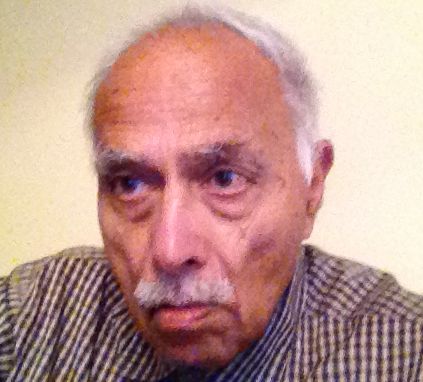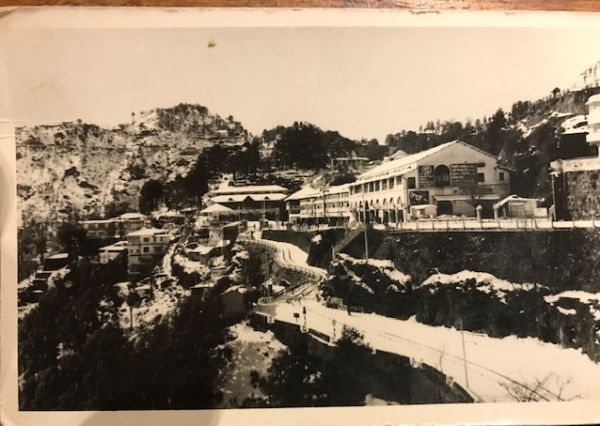
Dr. Anand - an unholy person born in 1932 in the holy town of Nankana Sahib, central Punjab. A lawyer father, a doctor mother. Peripatetic childhood - almost gypsy style. Many schools. Many friends, ranging from a cobbler's son (poorly shod as the proverb goes) to a judge's son. MB from Glancy (now Government) Medical College Amritsar, 1958. Comet 4 to Heathrow, 1960.
Widower. Two children and their families keep an eye on him. He lives alone in a small house with a small garden. Very fat pigeons, occasional sparrows, finches green and gold drop in to the garden, pick a seed or two and fly away.

This image is from a black and white picture postcard - I came across it in my old papers, a few weeks ago.
The postcard is of a "hill station", as it was known in British India. My father, Shri Amar Nath Anand, a lawyer, was in the habit of going to the hills every summer. This post card, I thought, was of Simla or Mussoorie. Vintage:1930s.
A niece living in India has searched (or researched?) through the internet, and concluded that it was Mussoorie of long ago.
My father was of course a Punjabi, a plainsman.
But he was fond of walking in the hills of the Punjab - Murree - (known in the vernacular as Koh Murree, though there was no Murree in the plains), Dalhousie, Solan, Simla, Kasauli, Dagshai. Then there was Srinagar, in Kashmir. And Dehra Dun (Shivalik Hills or the Lesser Himalayas) and Mussoorie (the Middle Himalayas). I and the rest of our family also enjoyed the Himalayan outings.